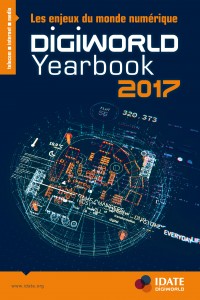What they have in common is the ability to keep very reliable transaction registers, in addition to benefitting from a distributed architecture with no master server. It is by no means certain, however, that the libertarian dream of redeploying online transactions using new logical interfaces without the use of trusted third parties, and which is open to all applications (smart contracts), is the dominant model for the investments being made at present. And it remains to be seen whether it is true that the blockchain applies chiefly to private projects inside a company, or to collaborative projects between companies belonging to the same sector.
Even if the blockchain continued to make headlines last year, it was not the only innovation to attract attention. There was the astonishing sight in summer 2016 of young (and some not so young) users prowling through parks, streets and train stations, their outstretched arm clutching a smartphone as they chased after Pokémons – trying to catch ‘em all. This marked the first massive success for augmented reality, giving it a jump on virtual reality where the gear and content is far more complex.
The most talked-about disruption in recent months, however, lies clearly in the developments surrounding artificial intelligence (AI) and the possible areas of application. But is there anything new in today’s AI compared to the definition we first heard several decades ago? First are the data and the data lakes that have been forming for several years now, and which promise to expand and diversify through the combined use of the cloud, IoT and big data. To tap into this mass of data, considerable progress has also had to be made on the components’ front to be able to perform efficient parallel processing. Contrary to determinist systems based on predictive models, where it is software designers who define the parameters that can tell a cat from a dog, the more evolved AI systems are based on machine learning, and more recently deep learning algorithms. It is by processing a phenomenal quantity of data that they are able to tell a cat from a dog, and put a Doberman and a Dachshund into the same category. The learning process is all the more long as we continually seek to expand the system’s scope of expertise.
For a great many people, the sign that AI had made tremendous progress of late came in March 2016 when AlphaGo – designed by the start-up DeepMind, now owned by Google/Alphabet – beat one of the grand masters of Go, Lee Sedol. This is no small feat when we know that the number of possible moves and paths to victory in a game of Go is infinitely larger than in a game of chess. Also fascinating, as Fields medal (mathematics) winner Cedric Villani recently pointed out6, is that the single game the South Korean player did manage to win was achieved by making moves he had never made before, entirely new moves that surprised aficionados watching the game believed were mistakes.
From a perhaps more concrete perspective, the emergence of AI as a major new influence in our industries can also be seen in the battle between Internet giants to secure a powerful voice-controlled interface for our smartphones, digital assistants and chatbots. This was the one real novelty at the latest Consumer Electronics Show. Amazon (Alexa), Google (Google Now), Apple (Siri) and Microsoft (Cortana) are all working to design an alternative to the keyboard for searching and controlling a smartphone or digital assistant. This battle will spread to other stakeholders through the API used to control the machines that surround us, from our washing machines to our connected cars.
So this year it will be interesting to keep an eye on the headway made by voice-controlled interfaces – which still need finetuning – and on how open they are and what alliances are forged between the main digital industry players. Another factor key to their adoption is the degree to which consumers embrace them – beyond the early-adopter geeks who already have their Amazon Echo. It’ll be fascinating too to watch whether these new devices become targets for hackers. This will also be a test of whether these interfaces, given that they are designed to become increasingly efficient as they learn your accent, your daily routine, your centres of interest and your tastes, will not drive up switching costs and only further consolidate the dominant positions enjoyed by the Internet leaders, all of which are investing heavily in R&D devoted to the AI sector.
Naturally the possible future uses of AI and deep learning are not confined to developing interfaces for natural language and virtual assistants. They will also include tracking the speed at which robo-advisors are deployed on a large scale in finance and the promises of AI in healthcare.
This article is an extract from the 2017 edition of DigiWorld Yearbook
What is the DigiWorld Yearbook?
A round-up of the finest analysis from IDATE DigiWorld experts who track global telecom, internet and media market developments year-round.
The DigiWorld Yearbook is published in English and French, and is available in print and PDF versions.
This edition will be available on the 6th of June: Print: €100 excl. VAT – PDF: €65 excl. VAT
To delve deeper on this theme
Preorder the DigiWorld Yearbook 2017
En savoir plusRegister to DigiWorld Future, the great debate about digital economy
En savoir plusDigiWorld Future 2016 Best-of


